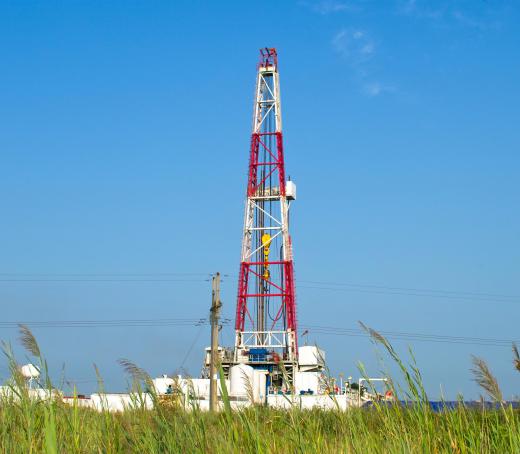When a well experiences a blowout, which is a sudden and uncontrolled expulsion of natural gas or crude oil, relief wells are one way to regain control. The relief well is typically drilled so it will intersect with the blowout, either to relieve pressure or block the reservoir. If the goal is to relieve pressure, the new relief well can be connected to the original piping. Otherwise, heavy drilling mud, cement, or other materials can be pumped into the reservoir through the new well bore. These materials can essentially stop up the original well, effectively bringing it back under control.
In the early days of hydrocarbon exploration, it was fairly common to tap into a pressurized oil deposit. When this occurred, oil or gas would come gushing from the ground. This is where the term gusher originated, and the iconic image of a derrick with a plume of crude oil spraying from the top is still often associated with the industry. These gushers were both wasteful and damaging to the environment, so technology, such as the blowout preventer (BOP), was developed to avoid such situations. When these safeguards fail, a blowout can occur and pressurized natural gas or crude oil may be released into the environment.

Relief wells are one of the primary means of defense against blowouts if the BOP and other safeguards have failed. In some cases a relief well can be drilled in advance of any problems, though this practice is typically not mandated. Most relief wells tend to be drilled in response to a catastrophic blowout and must be aimed perfectly to connect to the original well. If the aim is off at all, another relief well typically must be drilled.
A relief well can be aimed either at the underground well piping or at the reservoir. If the relief bore is aimed at the reservoir, it is sometimes used to divert some pressure from the damaged original well. In other cases, water, drilling mud, cement, and other materials can be pumped in to stop the blowout. The exact method that is used can differ from one situation to another.
Relief wells can also be used in ground stabilization, which has nothing to do with oil or gas. Unlike oil and gas relief wells, these are usually drilled as a precautionary measure. When the ground becomes saturated with water, the wells can be used to draw some of it out. This can have a stabilizing effect that is sometimes used to help prevent levee failure.
